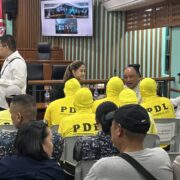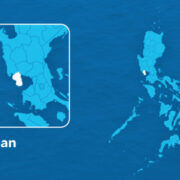Baguio jeepney operators ask council to review transport route plan

BAGUIO CITY — Operators of public transport vehicles (PUV) here asked the city council to reconsider the city’s transport route plan because it would displace over 600 jeepneys.
Carlito Wayas, president of the Piston (Pagkakaisa ng mga Samahan ng Tsuper at Opereytor) chapter in Baguio, said the route plan that was enforced through Ordinance No. 2024-022 was passed in May without sufficient consultations.
The route plan rearranges public transport services, by reducing PUV units that crowd each other out in densely populated communities and transferring units to streets which are underserved To make commuting more efficient. It also studied traffic and driving behavior.
Piston Baguio, in a paper presented during the council’s Citizens Hour on Monday, said the new routing system led to a reduction of active jeepneys from 2,164 units to 1,544, thereby excluding 620 jeepneys from serving Baguio’s road system.
“This translates to over 2,000 individuals and families facing the loss of their primary sources of livelihood,” the group said.
Wider impact
The reduction has impacted downstream businesses like canteens, vulcanizing and car repair shops, and even the work load of barkers and dispatchers at PUV staging areas, the group added.
Piston said Ordinance 2024-022 “condensed the original 46 routes within the city to 31 routes” made up of 29 “rationalized routes” and two new routes for areas which used to have no jeepney service.
The Baguio jeepney group said the new PUV distribution revealed a “disproprotionately large allocation of operating units” in areas within the central business district and tourist destinations, which reflected a bias for big business.
However, councilors said the route plan expanded the PUV services in these areas because these are roads with much higher commuter demand, given that over a million tourists visit the summer capital annually.
These areas are also heavily congested streets, where public transport is being encouraged to, in turn, discourage the use of private vehicles along downtown Baguio.
Traffic crisis
A 2019 carrying capacity study also concluded that the urban road area of 40 square meters for each Baguio individuals had been breached as early as 1988 and the roads of the summer capital have become too narrow for a population of over 300,000.
Piston acknowledged Baguio’s traffic crisis, but argues in its paper that cutting down PUV units would be a step backward given that the route plan increased the ratio of jeepneys to passengers from 1:169 to 1:237.
Wayas also claimed that the Baguio route plan sets in motion the phaseout of traditional jeepney in Baguio.
Vice Mayor Faustino Olowan said the council would hear them out, but stressed that “It would take time to amend it” since it took the city government five years to draw up the local route plan.
Piston has previously expressed its objections to Ordinance 2024-022 when its members staged a rally at City Hall on Sept 23.

















